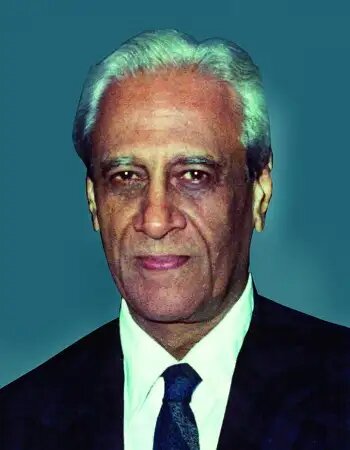Today is the 23rd death anniversary of visionary aerospace engineer, educator, and leader Dr. Satish Dhawan, who had been called as the ‘Father of Experimental Fluid Dynamics Research in India.’ A giant in every sense of the word, he has left deep imprints upon the nation and transformed it from a small fry to a leader in the space community. His legacy goes on inspiring future Indian science and technology.
Born on January 3, 1920, in Srinagar, Jammu & Kashmir, Satish Dhawan’s life was marked by an unwavering commitment to scientific discovery, innovation, and leadership. He was a brilliant student from the early years of schooling. After pursuing a degree in mechanical engineering from the University of Punjab, he moved to the United States for advanced studies. He was given a master’s degree in Aerospace Engineering at the University of Minnesota. Further education in the form of another master’s as well as a PhD in Aeronautics and Mathematics from the distinguished California Institute of Technology, or Caltech. There, he conducted revolutionising boundary layer theory work in fluid mechanics, catapulting him to expert status in aerodynamics.
He later became the Chairman of the Indian Space Research Organisation, or ISRO. It was way back in 1972, succeeding the legendary Vikram Sarabhai. It soon came to dictate a landmark transformation for India’s space program under his leadership. ISRO under his leadership had to be fashioned in dramatic dimensions to shift into long-term perspective and self-reliance, which laid the bases for firm groundwork of Indian capabilities in space. Dhawan thrust for indigenous technologies and innovation also enabled India to take that long jump into the world of space and launch its own first satellite, “Aryabhatta,” in 1975.
The tenures of Dr. Dhawan at ISRO were characterized by significant achievements that were not only space science but also application-oriented satellite communication and remote sensing. His efforts laid the basis for what turned out to be India’s most ambitious space missions, Chandrayaan and Mangalyaan. Under his stewardship, ISRO repositioned itself from being an institution that could be a source of cutting-edge scientific research to delivering practical solutions to the nation’s development needs.
In addition to the leadership role in ISRO, Dhawan made pioneering contributions in aerodynamics in areas like high-speed flows and boundary layer theory. From 1962 to 1981, he was Director of the Indian Institute of Science at Bengaluru. He is said to have encouraged an atmosphere of scientific investigation coupled with practical innovation. His work continues to influence fluid dynamics research even at IISc, while his mentorship shaped the careers of countless scientists and engineers who were to make valuable contributions to India’s scientific and technological progress.
A recipient of numerous accolades, including the Padma Vibhushan in 1981, Dr. Dhawan was also posthumously honored with the naming of the Satish Dhawan Space Centre (SDSC) in Sriharikota as a testament to his lasting impact on India’s space program. His leadership styles, which comprised humility and a deep sense of responsibility, were well highlighted during the ISRO’s hard times. For the first experimental satellite launch vehicle, SLV-3, it failed in 1979, and he took the blame for it fully, shielding his young team, which included the future President Dr. APJ Abdul Kalam. On the success of the next launch in 1980, he gave all the credits to his team, which reflected his great leadership qualities.
Satish Dhawan, despite massive success, had a very humbling approach while being committed towards the cause of science and technology for the greater good of the nation. This visionary leadership by him and planning for the longer term laid the foundations for the remarkable achievements followed at ISRO, including its successful Chandrayaan and Mangalyaan missions continue to make headway in worldwide news.
The legacy of Dr. Dhawan lives on in the institutions and scientists he nurtured and in the continued success of ISRO, shining brightly as an icon of India’s scientific and technological prowess. Today, we remember his passing on January 3, 2002; we honor the man whose foresight and determination turned India into a spacefaring nation and whose life inspires future generations of dreamers, doers, and innovators. His contributions have really made the stars more accessible to us all.
